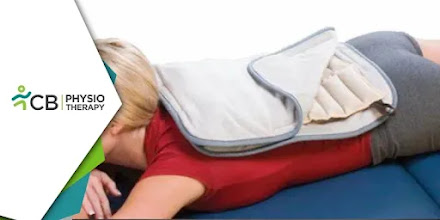Cholesterol management is crucial for maintaining a healthy heart and reducing the risk of cardiovascular diseases. While medication and dietary changes are common strategies, physiotherapy exercises can significantly improve cholesterol levels. The best part? You can perform these exercises, even during the chilly winter months. Here’s how physiotherapy-based exercises can help you achieve better cholesterol levels and overall health.
Understanding Cholesterol and Its Impact on Health
Cholesterol is a fatty substance found in your blood. While it’s essential for building cells and producing hormones, excessive levels can lead to health problems. There are two types of cholesterol:
1: Low-Density Lipoprotein (LDL): Known as “bad cholesterol,” high levels can lead to plaque buildup in arteries.
2: High-Density Lipoprotein (HDL): Known as “good cholesterol,” it helps remove LDL from your bloodstream.
Physiotherapy exercises, tailored to your fitness level and health condition, can improve HDL levels and reduce LDL levels by promoting cardiovascular fitness, enhancing metabolism, and reducing body fat.
Role of Physiotherapy in Cholesterol Management
Physiotherapy combines targeted exercises and therapeutic movements to improve overall health. These exercises enhance blood circulation, improve cardiovascular health, and boost the body’s ability to manage cholesterol effectively. Winter often limits outdoor activities, but you can use this time to focus on indoor exercises guided by physiotherapy principles.
Physiotherapy Exercises to Lower Cholesterol at Home 1. Cardiovascular Exercises
Cardio workouts are excellent for reducing LDL cholesterol and increasing HDL cholesterol. Physiotherapists recommend low-impact cardio exercises to avoid joint strain, especially for beginners or individuals with pre-existing conditions.
a) Marching in Place: A simple yet effective way to increase your heart rate.
b) Step-Ups: Use a sturdy step or low stool to perform step-ups.
Perform these exercises for 20–30 minutes daily to improve your heart health and cholesterol levels.
2. Strength Training
Building muscle helps burn more calories at rest, aiding in cholesterol management. Incorporate resistance exercises such as:
a) Bodyweight Squats: Strengthen your legs and improve circulation.
b) Push-Ups: Enhance upper body strength and endurance.
c) Resistance Band Workouts: Use bands for exercises like bicep curls and lateral raises.
Start with two to three sets of 10–15 repetitions for each exercise, gradually increasing intensity.
3. Core Strengthening
A strong core improves posture, supports overall fitness, and enhances metabolic activity.
a) Plank Holds: Begin with 20–30 seconds and increase the duration over time.
b) Seated Leg Lifts: Sit on a chair and lift one leg at a time to engage your core.
c) Bird Dog Exercise: Strengthen your lower back and core by alternating arm and leg raises on all fours.
4. Flexibility and Mobility Work
Flexibility exercises reduce muscle stiffness and improve blood flow, which aids in cholesterol regulation.
a) Cat-Cow Stretch: A gentle spinal mobilization exercise.
b) Hamstring Stretches: Perform seated or standing stretches to target the back of your thighs.
c) Thoracic Rotations: Improve spinal flexibility and promote relaxation.
5. Aerobic Exercises
Aerobic movements are especially effective in improving cardiovascular fitness and reducing LDL levels.
a) Jumping Jacks: Modify by stepping side-to-side if jumping is difficult.
b) Arm Swings: Gentle arm swings improve circulation in your upper body.
c) Chair Exercises: Perform seated aerobic movements like arm punches or seated marches.
Physiotherapy Techniques to Complement Exercises
In addition to active exercises, physiotherapy techniques like stretching, breathing exercises, and relaxation methods can further support cholesterol management.
1: Diaphragmatic Breathing: Helps reduce stress, which can negatively impact cholesterol levels.
2: Foam Rolling: Relieves muscle tension and improves circulation.
3: Posture Correction: Sitting and standing with proper posture enhances lung function and blood flow.
Additional Tips for Cholesterol Management in Winter a) Focus on a Heart-Healthy Diet
b) Combine physiotherapy exercises with a cholesterol-friendly diet: Include oats, legumes, nuts, and olive oil.
c) Avoid trans fats and limit saturated fats.
d) Stay hydrated with water and herbal teas.
e) Manage Stress Levels: Stress can increase cholesterol levels. Practice mindfulness, meditation, or hobbies to stay relaxed.
f) Get Adequate Sleep: Good sleep enhances metabolic health and supports cholesterol management.
g) Follow a consistent sleep schedule and create a restful environment.
Winter provides an excellent opportunity to focus on your health and well-being from the comfort of your home. Physiotherapy exercises not only help in lowering cholesterol but also improve overall physical fitness and mental health. Embrace these exercises and techniques to take charge of your health this season. Remember, every small step counts toward a healthier heart and a better quality of life.





